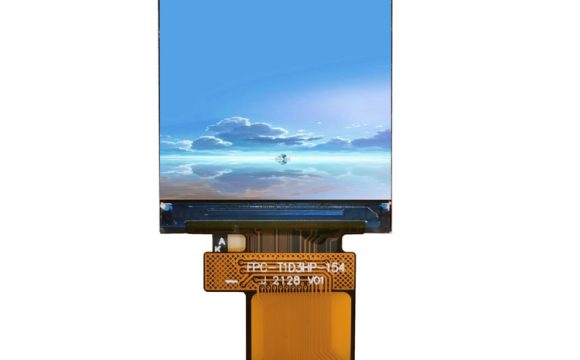There are many different types of irrigation systems. Some are simple while others require a lot of equipment and maintenance.
This type of system uses methods like pumping stations, canals, gates, and ditches to raise the water table and scatter it evenly throughout fields. This is the most expensive type of irrigation system.
Surface Irrigation
Surface irrigation is one of the most common systems of water supply. It requires low capital investment and minimal knowledge of advanced technology and can be used even in sloping fields. It is also the most energy-efficient method of irrigating sloping fields because it utilizes gravity to get the water across the field, thus saving on power costs. However, the system can be difficult to regulate and may lead to the fields being covered in excess water for prolonged periods.
It can be categorized into three types: Basin irrigation, furrow irrigation and border irrigation. The most widespread type of surface irrigation is basin irrigation, which consists of flat diked regions that allow undirected surface water flow. These systems can be constructed in all shapes and sizes to accommodate different cropping patterns and soil conditions. They can also be modified with corrugated surfaces or sand-filled trenches to improve soil quality and water distribution.
Another advantage of these systems is their ease of maintenance. The lateral pipes in a basin or furrow system can be easily inspected and cleaned, and they can also be flushed to keep them from becoming plugged with sediment or salts. This is a significant benefit over drip irrigation where the lateral tubes are buried underground and therefore are more difficult to inspect and maintain.
Drip Irrigation
Drip irrigation is a low-pressure method that drips water directly to the plants. It is a very efficient way to water since the water goes straight to the plant’s roots. It is also a great system for sandy soils, because it distributes the water over a larger area compared to surface irrigation methods. Drip irrigation can be used in residential landscape plantings and commercial vegetable row crop production.
The system consists of a pump unit that takes water from the source and provides the right pressure for delivery into a pipe system that carries it to the field (see Figure below). A settling pond may be required in some cases. The pump unit must be properly sized to avoid over-pumping and/or causing damage to the plant and surrounding soils. Other components include a filter to clear the water of weed seeds, fertilizer deposits and dissolved chemicals that can precipitate (like calcium and iron). A chemical injection unit is often included which slowly injects a controlled amount of fungicide, insecticide or herbicide into the irrigation water during each irrigation cycle.
A distribution system is composed of PVC pipes that deliver the water to the field. The pipes can vary in diameter and wall thickness. Some PVC pipe is flexible and can bend easily, while others are rigid and have a smooth bore. Emitters (nozzles) are spaced along the length of the pipe and are chosen according to crop requirements and soil conditions. Some are pressure compensated to maintain a consistent flow over the range of operating pressures and elevations.
Sprinkler Irrigation
Sprinkler irrigation mimics natural rainfall by spraying water droplets evenly across the surface of the soil. This type of irrigation is a great choice for many types of crops, including vegetables and fruit trees. It also offers a nearly hands-free, lush green landscape.
Like other irrigation methods, sprinkler systems have advantages and disadvantages depending on the field’s terrain. Some systems only work he thong tuoi tu dong in very specific topographies and some can be extremely expensive.
One of the most widely used irrigation systems is a center pivot system. It consists of a series of towers that rotate and move in a circle to irrigate cropland in a circular shape. A central control unit controls the rotation and movement of each tower. Operators can use a cell phone or satellite radio to communicate with the machine and remotely control its operation.
Linear-move, travelling big gun and side roll systems operate similarly to a center pivot system but are designed to irrigate rectangular fields. These systems are more labor intensive through the season but have lower long-term system costs.
Solid-set systems are designed for turf, landscape and permanent crops. They are a low-cost option and provide uniform coverage that promotes balanced growth and high yields. They can be paired with fertilizers to simultaneously apply nutrients and water (a practice known as fertigation) to enhance nutrient uptake.
Irrigation Methods
Irrigation is the artificial process of pouring water over soil to maintain a consistent level of moisture. This is done by a variety of methods including spraying, tubes, and pumps. Irrigation is required in areas that do not receive enough rain to sustain plant life on their own.
Early civilizations built canals, dams and elaborate systems of irrigation channels in their quest for agriculture and food. Today, we use technology to provide the same benefits with far less energy.
Surface irrigation has three subcategories: furrow, border, and basin. The latter involves a field that is enclosed with levees to stop the water from flowing out of the area. This method works well for crops that are able to tolerate flooding, such as rice.
A variation on traditional flood irrigation is surge flooding. This system uses gated pipes with solar or battery powered controllers. The valves alternate between allowing water to flow into the field and shutting it off, thus creating pulses of irrigation that reduce unwanted runoff.
This system is suitable for a wide variety of crops. It also works well on slopy terrain. The only limitation is that the inflow rate should be large enough to advance the water front, but not too large to erode the fertile soil out of the field. Also, it should not create a condition known as waterlogging where the ground becomes saturated.








